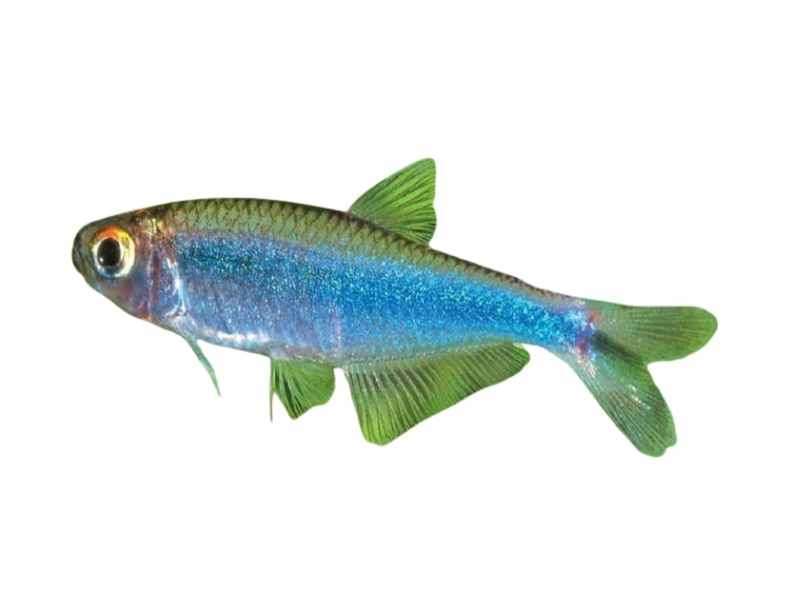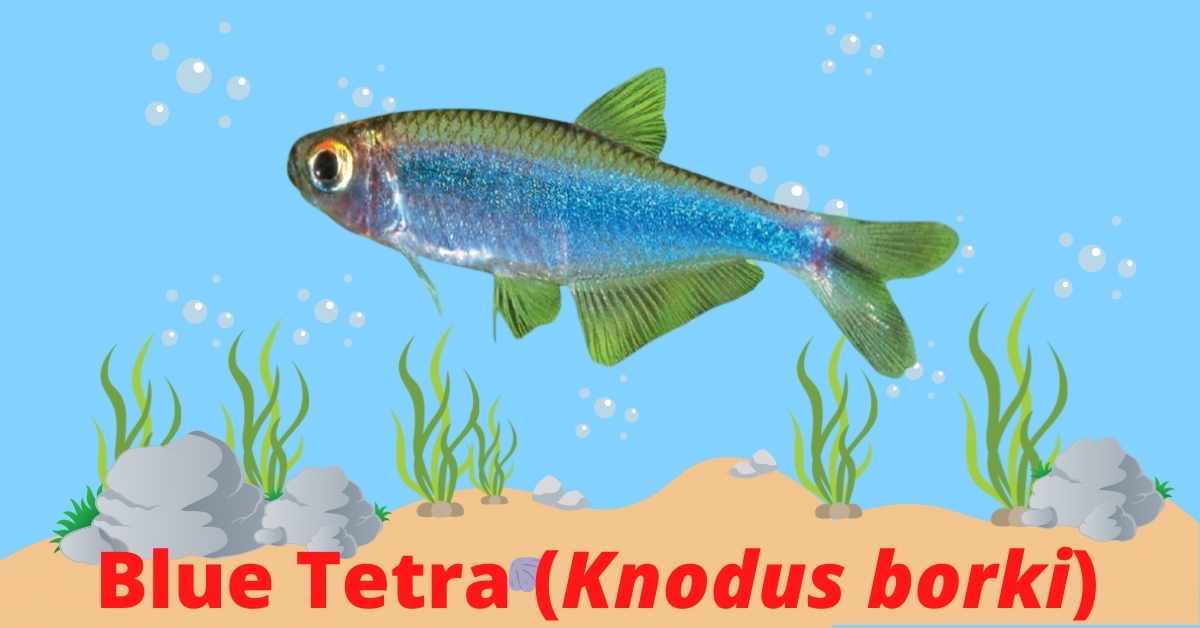The Blue Tetra-nodus borki is a beautiful fish that is found in the Amazon River and their tributaries. They are native to South America, where they live in streams and rivers. They are a schooling fish and can be found in large numbers at a time. These fish are peaceful and make great additions to any community tank. They are popular among the aquarium hobbyists and can be found in many pet stores.
You might also read: Red Phantom Tetra-Hyphessobrycon sweglesi
Systematic Position
Phylum: Chordata
Subphylum: Vertebrta
Class: Actinopterygii
Order: Characiformes
Family: Characidae
Genus: Knodus
Species: Knodus borki
These fish are found in both slow-moving and fast-moving water habitats, and can tolerate a wide range of water conditions. They typically inhabit areas with dense vegetation where they can find shelter from predators and take cover to ambush prey.
They are popular aquarium fish and are known for their bright blue coloration. They are torpedo-shaped and have a deep blue body with black stripes and grow to about 2 inches in length with a lifespan of about 3-5 years. These fish get their name from the blue stripe that runs along the length of their body.

Blue Tetra Quick Facts
Scientific name: Knodus borki
Common Name: Blue perusal tetra
Adult size: 2 inches
Minimum Tank size: 20 gallons
Temperament: Lively, slightly aggressive
Diet: Omnivore
Breeding: Egg layers
Temperature: 72°F – 78°F (22°C – 26°C)
Water pH: 6.5 – 7.5
Hardness: 5–12 dGH
Care level: Easy
Lifespan: 5 years
The Blue tetra is a schooling and active fish that loves to swim and can be seen darting around the tank. They are also very playful and will often chase each other around or play tag with other tank mates. These little fish make great additions to any community tank and are sure to bring color and life to your aquarium. They are also very social animals and should be kept in groups of at least six individuals.
Blue tetras have a very distinctive feeding behavior. They will form a tight school around an insect or other prey item, then slowly approach it from all sides before finally snapping it. This method allows them to capture prey that would otherwise be too fast or agile for them to catch individually.
These fish are omnivorous and feeding on both plant material and small invertebrates. In the wild, they feed on insects, crustaceans, and other small aquatic organisms. In the home aquarium, they will eat most types of flake food, pellets as well as freeze-dried bloodworms or brine shrimp and vegetables such as spinach or zucchini squash. A diet high in vegetable matter will keep your Blue tetras healthy and colorful. You can either feed them directly from your hand or use a feeding spoon or fork to place the food near their mouths. As with all aquarium fish, it’s important not to overfeed them; too much food will cause water quality problems.
The Blue tetra is a hardy fish that can tolerate a wide range of water conditions. Blue tetras make popular pets due to their attractive coloring and easy care requirements. They do best in a well-planted tank with plenty of hiding places and open swimming areas. When kept in an aquarium environment, blue tetras require a tank size of at least 20 gallons with plenty of swimming space and densely planted areas for cover. They do best in soft, acidic water with moderate to high water flow and the water temperature should be maintained between 72°F – 78°F (22°C – 26°C), pH level 6.5 – 7.5, and hardness 5-12 dGH.
In order to maintain the health of your Blue tetras, it is important to keep the water quality high. The tank should be filtered and cleaned regularly, and the water should be tested for ammonia, nitrite, and pH levels at least once a week. Additionally, you will need to provide your fish with plenty of oxygenated water by adding an air pump or bubbler.
Blue tetras are generally peaceful fish and can be kept in community tanks with other non-aggressive species of tropical fish. They do best when kept in groups of six or more individuals to help reduce stress levels. Blue tetras can be kept with many different types of fish, but some species may be too aggressive for them. They should not be kept with larger predatory fishes however as they may become prey items. Tetras, barbs, danios, and other small fish make good companions for blue tetras. Larger fishes such as cichlids or catfish should not be kept with them due to the risk of being eaten.
Blue tetras are sexually dimorphic, meaning that the males and females look different from one another. The males have a brighter blue coloration than the females and they also have an elongated anal fin known as a gonopodium which is used to fertilize the eggs during mating. Blue tetras reach sexual maturity at around six months old.
Blue tetra breeding behavior is interesting to watch. The male will approach the female from behind, then wrap his body around hers before releasing his sperm into her reproductive tract. Many people enjoy watching blue tetra breeding behavior because it is so fascinating to see how they mate underwater. Watching these little fish spawn can be very rewarding for any aquarist!
Blue tetras are egg layers and easy to breed. They breed readily in captivity if provided with good conditions and making them an ideal choice for those who want to breed their own fish. To breed them in captive condition, you will need to provide some sort of spawning mop or sponge for the female to deposit her eggs on, and then remove it once she has finished spawning so that the male can fertilize them.
The eggs are adhesive and will stick to plants or other surfaces within the tank. The male builds a bubble nest at the surface of the water while the female lays her eggs inside it. After spawning, both parents will care for the eggs until they hatch, usually within 24 hours. Once hatched, the fry will remain in the nest until they are able to swim on their own, after which they will be transferred to another tank where they can continue growing until they reach maturity.
The fry should be fed a variety of foods, including brine shrimp, crushed flake food, and powdered baby food until they are large enough to eat flake food. In this time, the fry will remain near their parents for several weeks until they are able to fend for themselves.
This fish is an excellent choice for both beginner and experienced aquarists alike, as it is hardy and easy to care for. The Blue tetra requires a moderate level of care, and with proper tank conditions will live for several years.

